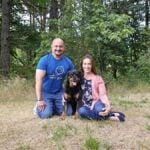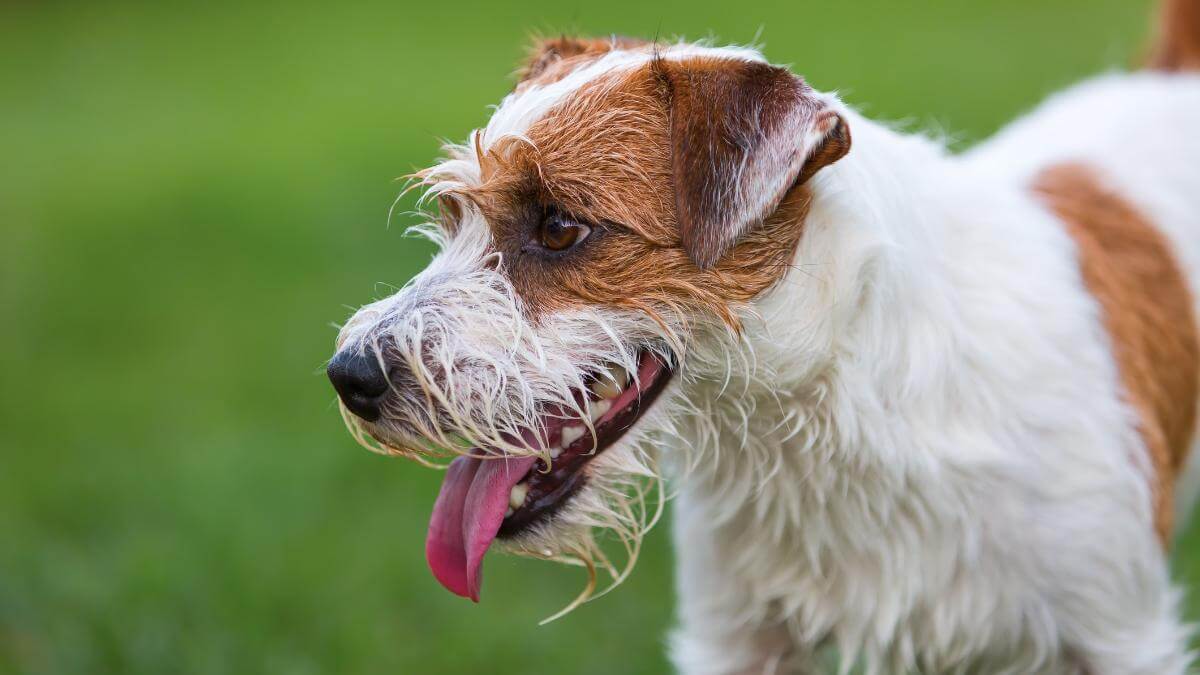


Home » Of Hounds and Terriers

This article was originally published in Showsight Magazine, July 2013 issue.
The Parson Russell Terrier was developed exclusively to work with foxhounds in England by the Rev. “Parson” Jack Russell in the mid-1800’s. The terrier required enough leg and substance to get across the countryside with hounds but still be able to go underground for the purpose of bolting the fox. The original distinguishing characteristics of this terrier were the harsh, weatherproof jacket, a hint of eyebrow and beard, and predominantly white in color. Rev. Russell was often referred to as “the father of the wirehaired fox terrier” in the 1800s and his bloodlines can be found in old fox terrier pedigrees. The Parson also comes in a smooth coat although not seen as often. The smooth coat must also be weatherproof. No working Parson Russell Terrier can run with a pack of hounds in full cry, but an intelligent terrier can keep with the hunt. These terriers are quite capable of running the line (scent), but when a foxhound opens on that line he will quickly leave the terrier behind.
Of course, a foxhound is a running machine where a terrier is not. In Rev. Russell’s day there were no motorized vehicles to transport hounds and terriers, and the Parson’s terriers accompanied the hounds on long journeys to and from the meets. The Parson Russell Terrier was not intended to be carried on horseback but rather was expected to travel with the hounds. In the United States people work their terriers to such vermin as groundhog, but there is no substitute for a Parson going to ground after a red fox, its true quarry. While many must pursue whatever quarry is in their area if they want to work their terriers in the field, it is a great pity to see the Parson altered and often miniaturized for small quarry, the result being lack of bone, substance, type and size. Having hunted in Great Britain a fair amount, the most magnificent sight I have ever seen is a pack of foxhounds watching and waiting while the terriers to bolt the fox that they have run to ground. Suddenly, the fox decides he had better quit the premises and out he bolts like a streak. Within a split second the hounds are behind him with a great roar and the chase is on again.
This is what foxhounds and terriers are all about – this is what the Parson Russell Terrier was bred for! Much as I loved hunting on horseback well in excess of forty years, it is an education to accompany the terrierman in the UK on a hunting day. His job is of great importance and his terriers are the tools of his trade. He has great knowledge of the fox and the terrier, and he knows every earth in his hunted country. This is where you learn about the conformation of the Parson. If they are too short in the back it is more difficult for them to turn around in a tunnel. If they are too big in the chest they will have great difficulty getting to a fox underground—and getting back out. If they lack bone and substance, have short legs, a weak muzzle or big ears, or if they have no length of neck they will be dealt a great deal of punishment by a fox. If they lack a waterproof coat they will suffer in the wet and cold. It all comes together and makes sense. Sometimes we breeders feel that the Parson Russell Terrier is not taken seriously in the AKC ring. But don’t underestimate this breed. It is one of the few terriers that can boast that not only it can, but does today what it was developed for well over one hundred years ago. Parson Russell fanciers are proud of the fact that this terrier remains a serious working terrier and yet is a particularly handsome dog in the show ring. And as an added attraction, the Parson is the best of companions. He is intelligent, fun-loving, affectionate and the best of companions.